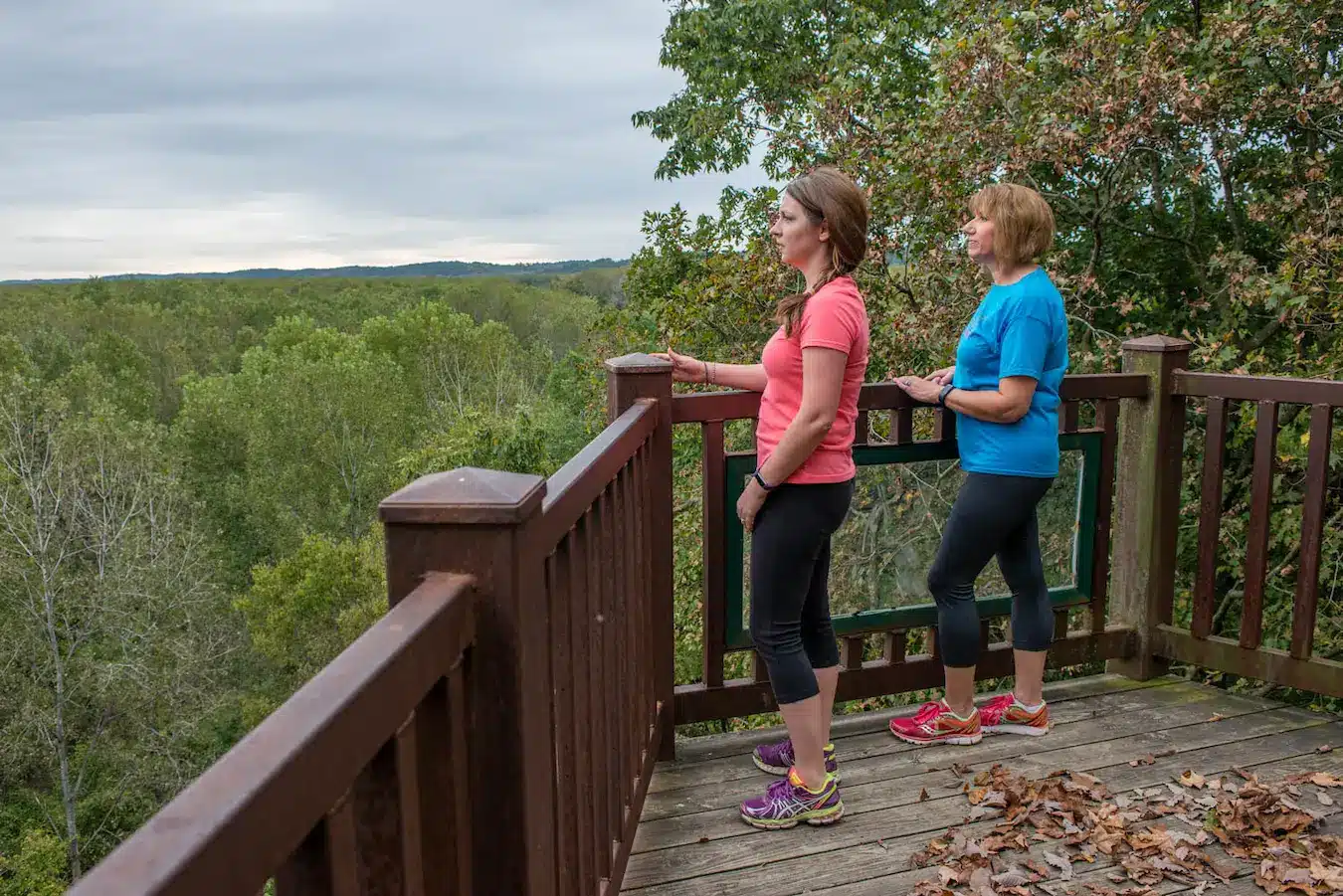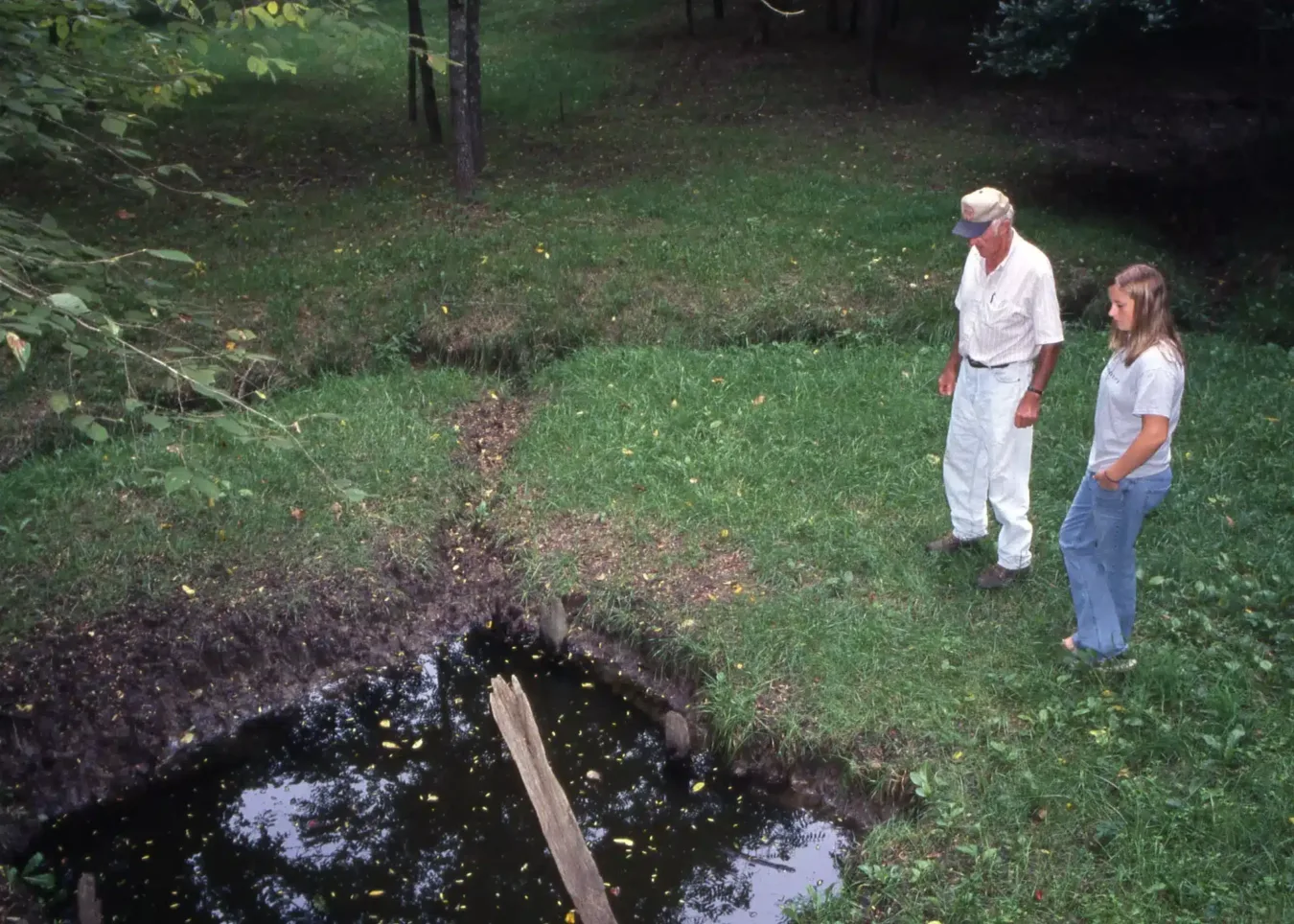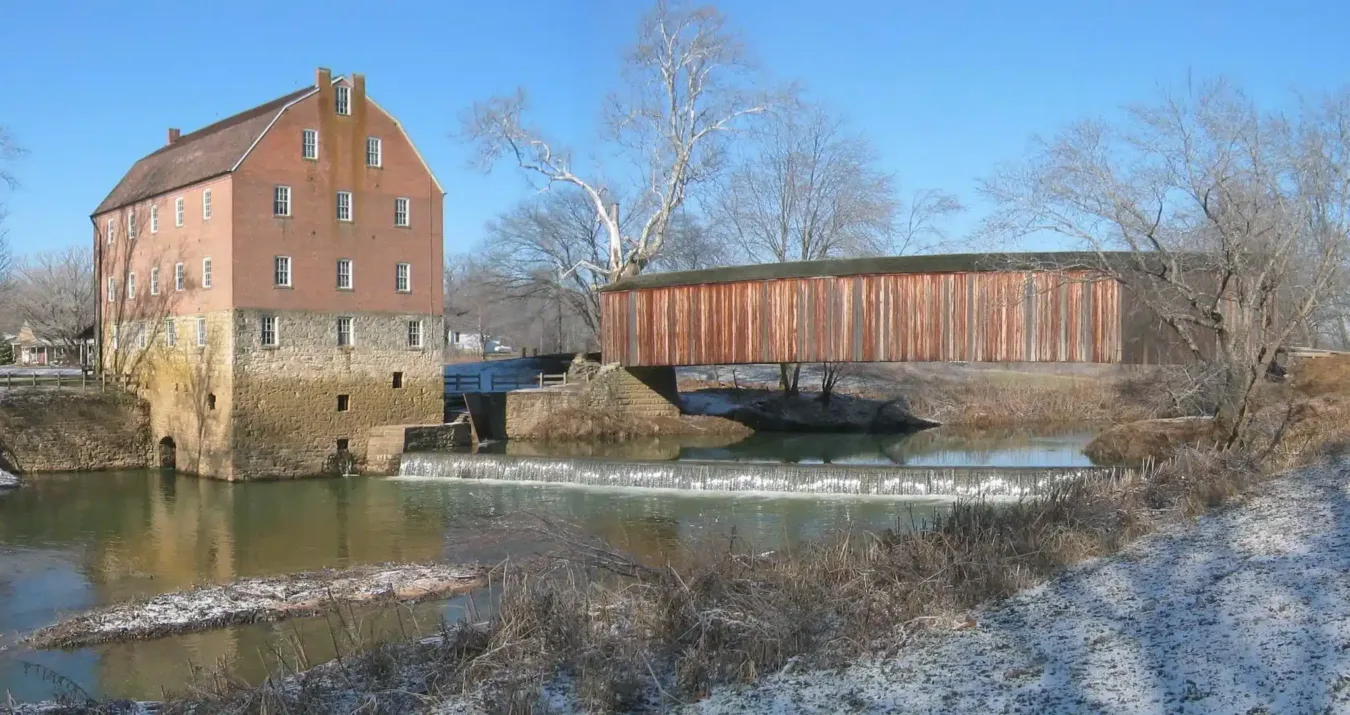Seeing the history play out in the ancient bones and other artifacts at Mastodon State Historic Site is an eye-opening experience. Stop by the visitor’s center to see a life-sized replica of a mastodon, then follow the self-guided trail to the excavations site.
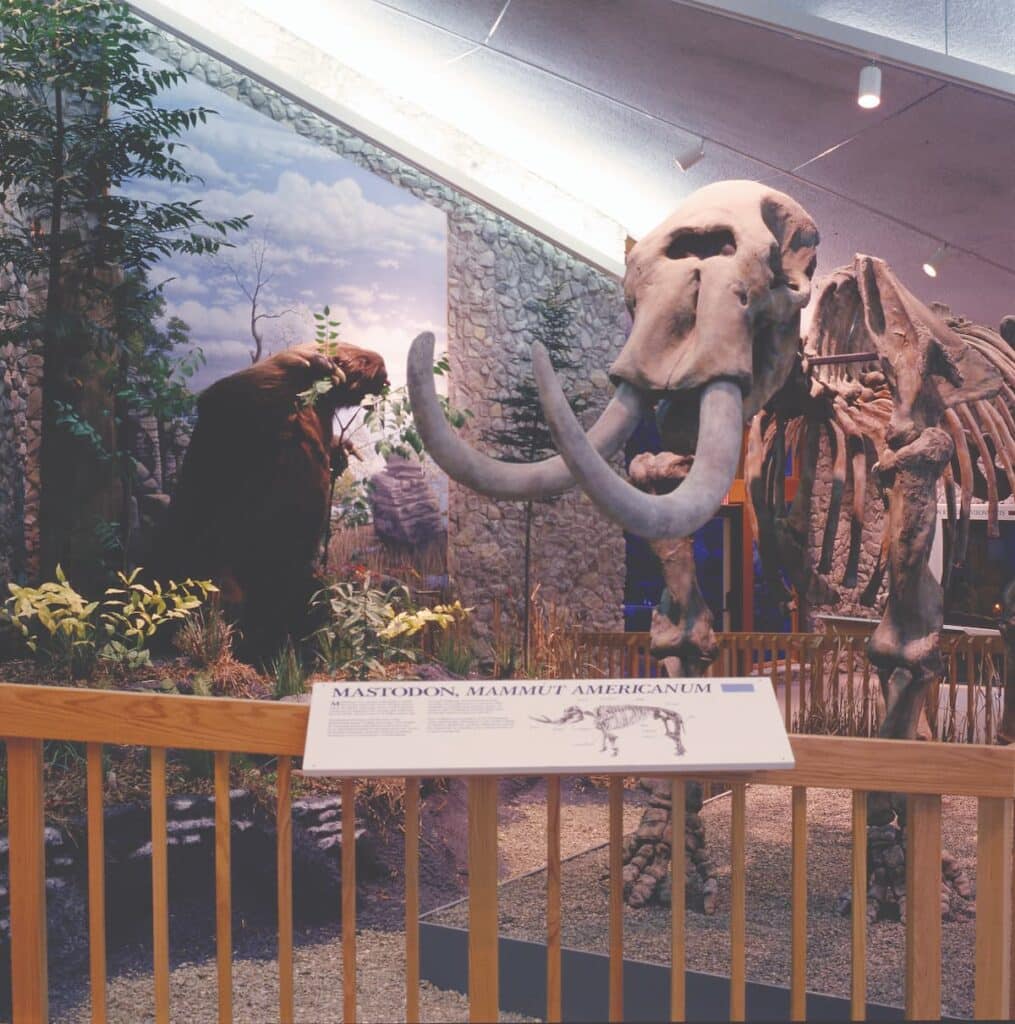
Photo by B.H. Rucker
“BESIDES THE MASTODON’S HEAD, I have found near the same place, several highly interesting remains of antediluvian animals, one of which especially merits attention. It is the head of a nondescript animal, which appears to have been superior in size to the largest elephant, and which resembles somewhat the Mastodon in the hind part of the head, but the front part is entirely different; and until it is recognized or proved to have been previously discovered, I shall name it Koch’s Missourium, in honor of the state it is discovered in, and intend, in a very short time to give a minute description to it, as well as of a great many relics not herein mentioned.”
This is how self-styled naturalist Albert C. Koch, writing in 1839, described the giant creature he found just south of St. Louis in Jefferson County. He eventually called it Leviathan Missouriensis. Koch was not hindered by a scholar’s knowledge of anatomy (or any other science, for that matter). Thus, he was free to fill in gaps in his creature’s reassembled skeleton with bones from other animals and other locations. Koch eventually agreed to sell his collection to the British Museum for several thousand dollars along with an annual stipend. The true scholars at the British Museum were not impressed with Koch’s fanciful creations, but they recognized what was clearly a significant collection of Pleistocene animal bones. Koch’s Missourium, properly reassembled, turned out to be a mastodon (Mammut americanum) after all. It still resides in London, where it has often been on public display at the Natural History Museum.
Koch made his most famous discovery at the base of a limestone bluff near the junction of Rock and Black Creeks, close to the village of Kimmswick and not far from the Mississippi River. Many prehistoric animals traveled to this site, probably attracted by the sulphur springs and salt licks. And many died there, perhaps trapped in the marshy ground.
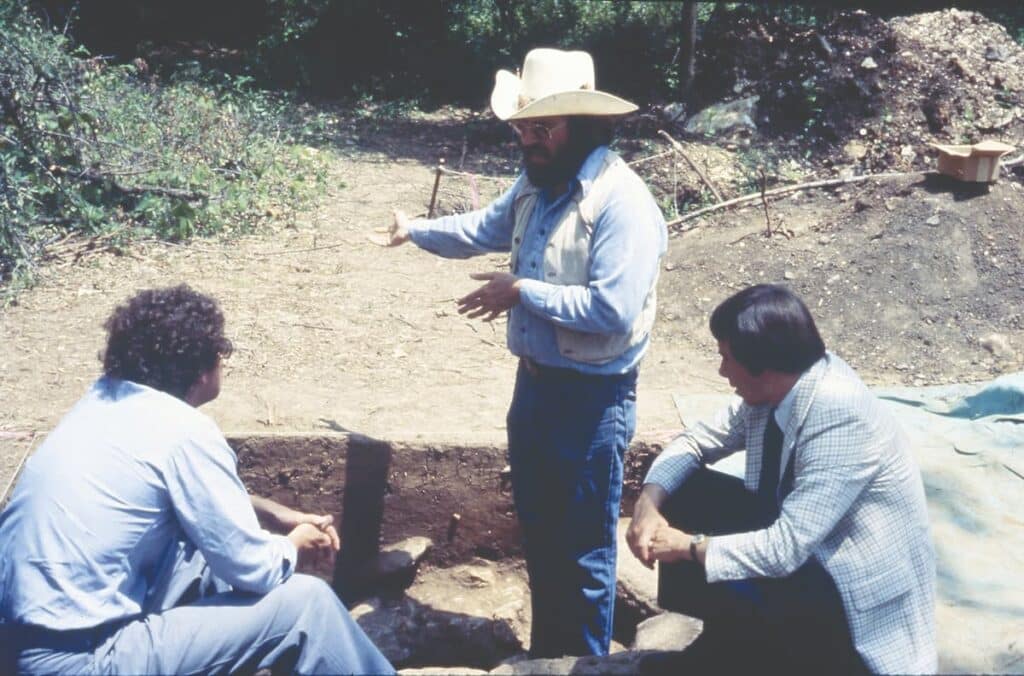
Photo by K.W. Cole
Over the years following Koch’s initial diggings, many would-be paleontologists, and some fast-buck artists, were attracted to the ancient bones at the site. For nearly ten years beginning in 1897, Charles W. Beehler of St. Louis conducted extensive excavations and established a small museum there. During this period, it was not unusual for teams of visiting scientists to make the twenty-two-mile train trip down the Iron Mountain route to view the marvelous fossils. Perhaps to increase interest in this strictly commercial venture, the promoters claimed that human bones and some stone tools had been found in association with the bones of extinct species of animals, but professional scientists remained skeptical owing to inadequate controls and documentation—especially after later examination demonstrated that the purported human bones were not from humans.
From 1940 to 1942, Robert McCormick Adams, a St. Louis archaeologist, conducted scientifically oriented excavations at the Kimmswick site with Works Progress Administration funding. Though he discovered a projectile point from the Early Archaic period—circa 7,000 to 5,000 BC—in undisturbed loess above the bone bed, he did not find any direct evidence for the association of humans with mastodons or other species. Then the discussion rested for a time, though other scientists and untold amateurs continued to pick over the site.
The initial 418 acres of Mastodon State Park, including most of the old bone beds, were acquired in 1966 by the State Highway Department as part of the right-of-way for the new Interstate 55 heading south out of St. Louis. Four years later, after completing the new highway, the department declared the acreage surplus property and made plans to auction it off. Local residents, long proud of the historic significance and scenic beauty of the area, organized the Imperial Improvement Association to try to save the land as a park. The Highway Department was determined to realize a financial return on the tract and would not consider simply transferring the property to another state agency. But they agreed in the fall of 1970 to delay any sale to give county officials time to explore the park option.
A state archaeological survey presented to the State Park Board a month later dashed cold water on the dreams of the local residents. Despite the generous volume of bones retrieved from the site over the previous 140 years, the report expressed doubts concerning the extent of undisturbed Pleistocene deposits remaining. To try to put to rest the putative connection of mastodon bones with human artifacts, the survey report stated, “No cultural material has ever been found at the site to show man’s involvement and contemporaneity with these mastodons.”
Local advocates were neither pleased nor deterred by the negative report. One bright spot was a tentative endorsement by Robert McCormick Adams. Although not sure what was left of the bone-bearing deposits, he thought the development of the bone beds as an interpretive area would “keep alive the vast importance of this site to American history.”
Local enthusiasm for a park continued unabated, but action lagged. In spring 1974, the Highway Department finally went ahead with its auction, and some St. Louis developers delivered the winning bid of more than $568,000. An explosion of activity ensued, including a lively protest before the highway commission. Four area women—Dorothy Heinze, Marilyn King, Hazel Lee, and Rita Naes—took it upon themselves to form the Mastodon Park Committee to shepherd the project. Within a few months, the women had secured a commitment from the highway commissioners to delay awarding the bid for eighteen months to see if the committee could equal the amount offered. In addition, they secured an agreement by state park officials not only to accept the property as a state park but to request half the purchase price in the form of a grant from the federal Land and Water Conservation Fund.

Photo courtesy of Missouri State Parks
Holding dances and other events, often with fabulous home-cooked meals, and appealing to all sorts of individuals and organizations, the women of the Mastodon Park Committee started raising money. After three months, they had about $24,000. The 1970 archaeological report still haunted the project; was all this effort justified? One conservation organization solicited for help responded that it was a “quite ordinary and common site” not meriting state park status. And indeed, without continuing archaeological significance, the site was nothing special; it was cut by roads in several directions, had sewer easements on it, was crossed by a large power line, and had been dug over for lime. More recently, it has been surrounded by urban development.
Fortunately, in retrospect, the local park promoters did not listen to all the expert advice they were receiving but kept plugging away. Their ceaseless lobbying of local representatives and other efforts were acknowledged in 1975 when the legislature appropriated $200,000 in state funds toward the purchase. By the deadline, they had raised enough money on their own, including a $28,000 pledge from the McDonnell Douglas Personnel Charity Trust, to meet the bid with funds to spare. The committee presented a check to the state, and Mastodon State Park became a reality in July 1976. It was reclassified in the 1990s as a state historic site.
The successful effort led Gov. Christopher Bond to declare the “campaigning and fundraising for saving of the historical site … one of the finest projects to celebrate the Bicentennial in the state.” But the Mastodon Park Committee did not rest on its laurels; the four women continued to raise money to help in developing the recreational and interpretive resources of the new park, insisting on new archaeological excavations to search especially for evidence of possible human association with the mastodons.

Photo courtesy of Missouri State Parks
Since leading Missouri archaeologists considered the site too compromised to be worth their time, state park officials contracted for initial reconnaissance with a research team headed by Russell Graham of the Illinois State Museum, much to the consternation of the Mastodon Park Committee. After a century of pilferage, they were reluctant to see any bones leave Missouri, even if only temporarily. But they soon became enamored of the scientists. Almost immediately after beginning work, in May 1979 the Illinois researchers discovered a Clovis spear point, a very ancient and distinctively shaped projectile, in direct association with mastodon bones. Halting all excavation, they put out a call to the dean of Missouri archaeologists, Carl Chapman, and other specialists who raced to the scene along with a gaggle of TV, radio, and newspaper reporters to examine the stunning find.

Photo by B. H. Rucker
The discovery at Mastodon State Historic Site is now considered the first undisputed evidence of the association of humans and mastodons in North America. The 1979 excavation and two subsequent ones have yielded two Clovis points, other tools, and waste flakes resulting from the manufacture of chipped stone tools, as well as bones from a species of sloth, a bison, a miniature horse, a wild pig, a stag moose, and a giant armadillo. While no datable organic materials have been recovered, it is believed that the site dates to about twelve thousand years ago, based on the similarity of the points to others recovered in the West. The finds were especially significant at a time when scientists from many disciplines were interested in the phenomenon of widespread extinction of large mammals at the end of the Ice Age and were considering the possibility that early humans may somehow have been involved.

Photo by Christopher Ferree
Prodded and aided by the Mastodon Park Committee, park officials built a beautifully designed visitor center at the crest of the hill above the discovery site. Octagonal in shape, the structure leads the visitor back through the epochs of human and natural history in the area, past a life-size replica of a mastodon skeleton, through an exit to a self-guiding trail that wends past the Charles Callison Memorial Bird Sanctuary and down the hill to the excavation site at the base.
What remains of the archaeological deposit is being preserved, and at present, there are no plans for further excavation. Friends of the site would undoubtedly like to see excavations continue—we like to know and accomplish all we can in our own lifetimes—but preserving a portion of exceptionally significant sites such as Mastodon is necessary so that future generations of scientists, armed with technologies we can scarcely imagine, may make yet more stunning discoveries.
Self-styled naturalist Albert C. Koch called his sensational find at what became known as the Kimmswick Bone Bed the Leviathan Missouriensis. He traveled the country displaying his beast and other fossil discoveries with an air for showmanship that P. T. Barnum would have hailed.
Feature photo: A walk through the beautiful woods at Mastodon State Park offers respite from the rapid urbanization of Jefferson County.
Photo by Christina Pick
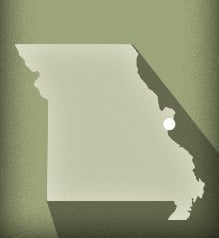
MASTODON STATE HISTORIC SITE • 1050 CHARLES J. BECKER DRIVE, IMPERIAL
Read more about Missouri’s amazing state parks and historic sites here.
Click here to purchase the Missouri State Parks and Historic Sites book.
Related Posts
Clark’s Hill/Norton State Historic Site
Clark’s Hill is a triple-bonus sort of place, interesting geologically, geographically, and historically. Plus, it provides one of the finest overlook views of the Missouri River valley that can be had. Hike up the hill to stand in the footsteps of Lewis and Clark.
Boone’s Lick State Historic Site
Boone’s Lick State Historic Site is off the beaten track but well worth the trip to visit. We take salt for granted but there was a time that salt was made from boiling down the briny water and then it was shipped to settlements. Learn about salt production at this 50 acre site.
Bollinger Mill State Historic Site
Bollinger Mill and Burfordville Covered Bridge provide you with a step back in time to experience genuine grist milling, a stroll through the oldest covered bridge in Missouri, and a peaceful rest along a tree-lined stream.

